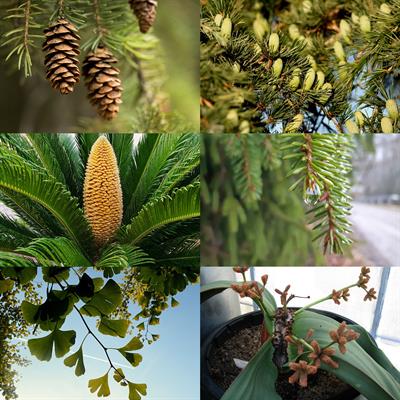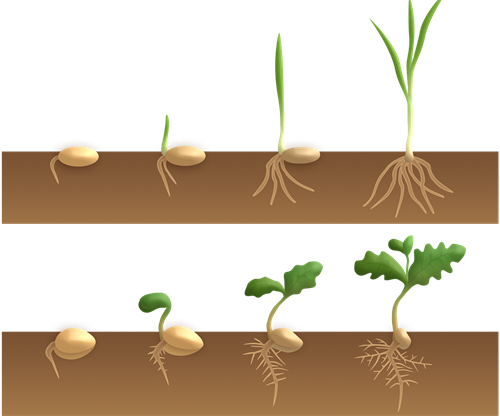PDF chapter test TRY NOW
An introduction about flowering plants:
These are plants which have well-developed reproductive organs that help them to produce seeds. Seeds are produced only through the process of sexual reproduction.
Seeds are structures which consist of the embryo along with stored food. During the process of germination, this stored food assists in the initial growth of the embryo.
Based on the criteria of whether these seeds are naked or enclosed in fruits, the phanerogams are divided into two groups known as the gymnosperms and angiosperms.
Gymnosperms:
- The term gymnosperm is derived from two Greek words: 'gymno' that refers to naked, and 'Sperma' refers to seed.
- The plants belonging to this phylum produce naked seeds, i.e., the ovules are without an ovary.
- They are perennial, evergreen, and woody.
- Their seeds are naked, as they do not produce any flowers or seeds.
- They possess vascular tissues, xylem without vessels, and phloem without companion
cells.
Example:
Pines, Deodar, Conifers, Cycads, Ginkgoes, and Gnetophytes

Clockwise from top left: Pines, Deodar, Cycads, Conifers, Ginkgoes, and Gnetophytes
Angiosperms:
- The term angiosperms combine two Greek words, 'angio', which means covered and sperma, which means seed.
- The flowers produced by the plants develop to form fruits inside which seeds are produced.
- The plant body of angiosperms is differentiated into true roots, stems, and leaves.
- These plants produce flowers with four whorls (calyx, corolla, androecium, and gynoecium); hence they are commonly known as flowering plants.
- The female reproductive organ of the plants, the ovary, is present inside the flower and later develops into the fruit. The ovules develop into seeds.
- The embryos inside these seeds have structures known as cotyledons or seed leaves.
- At most times, these structures emerge green in colour during seed germination. Based on the number of cotyledons found in the seeds, the angiosperms are divided into two groups.
Monocots:
The plants whose seeds have a single cotyledon are known as monocots or monocotyledonous.
Dicots:
The plants which produce seeds with two cotyledons are known as dicots.
The monocots have long leaves with parallels venation (veins run parallel) and fibrous roots.
The dicots have broad leaves with a network of veins (reticulate venation) and taproots.

Example:
Monocots - Corn, wheat, rice, maize, bamboo, and grass
Dicots - Rose, sunflower, peas, almonds, pumpkin, tamarind, and lily

Germination of seeds: Top - Monocot; Down - Dicot
Reference:
https://stocksnap.io/photo/pine-cones-WQGTDB1UEZ
https://www.flickr.com/photos/dweickhoff/4736559921
https://www.flickr.com/photos/arthur_chapman/5871505195
https://upload.wikimedia.org/wikipedia/commons/thumb/8/88/Ginkgo_biloba_%289%29.JPG/512px-Ginkgo_biloba_%289%29.JPG
https://upload.wikimedia.org/wikipedia/commons/7/76/Monocot_vs_Dicot.svg
